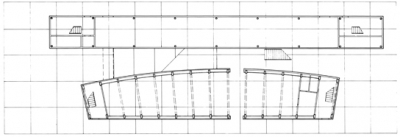The Finnish Pavilion
Finland joined Expo92 in Sevilla in autumn 1989, when Helvetinkolu (Hells Gorge-Finland), the winning entry in an architectural competition arranged by SAFA, was chosen as the basis for further work. This set in motion a design process on the theme Finland Creative by Nature. This slogan was already in the competition brief, so it was natural that it should become the overall idea of the pavilion. It was simply a question of sticking to it firmly. The pavilion was made up of two buildings which were counterpoints to each other: Kone (Machine), made of steel, and the other, and the wooden Koli (Keel), with Helvetinkolu connecting them. The buildings were connected by a bridge, which lead directly from one exhibition space to the other, and a steeped ramp which took the audience arriving at the pavilion to the exhibition level. The exhibition was divided into two parts both Kone and Koli contained their own exhibition spaces. The basic shape of the pavilion was designed at the competition stage, when it was designed at the competition stage, when it was stated that the building should also reflect the character of the exhibitions to be held in it. The basic idea was that the buildings themselves would clearly express the phenomena at work in Finnish culture.
The architects approached this goal by creating a number of pairs of opposites, the most powerful of which became modern versus traditional.
Black, steel-clad Kone represented a striving forward, a new age, but perhaps also in its reserve a restless uncertainly in the face of a future fraught with change.
Koli was the soft feminine opposite of Kone. Traditional but tough, it gave the soul to the sculptural unity of the pavilion.

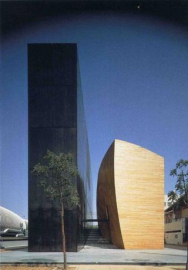
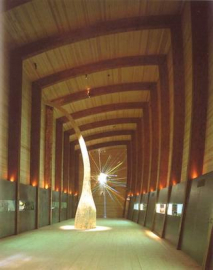
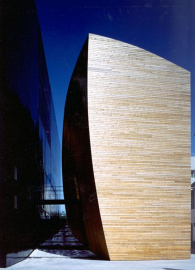
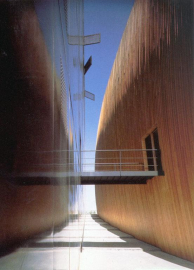
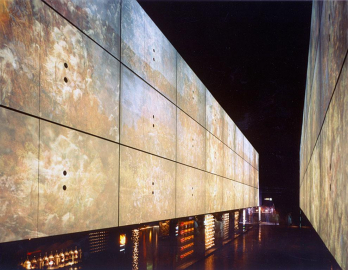
.jpg)
